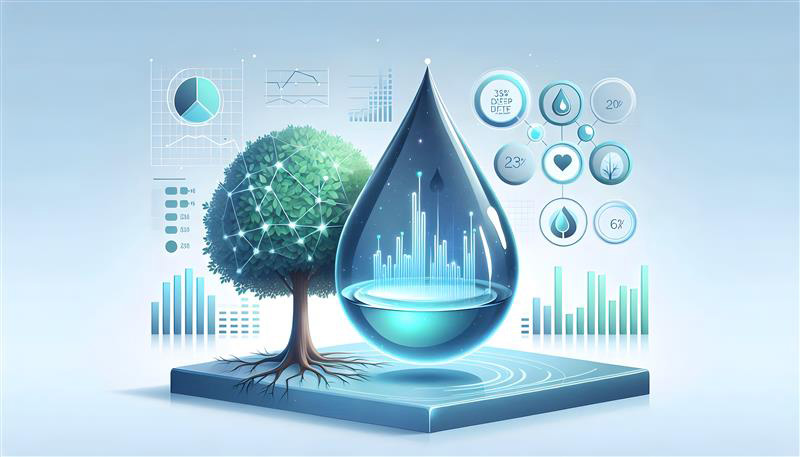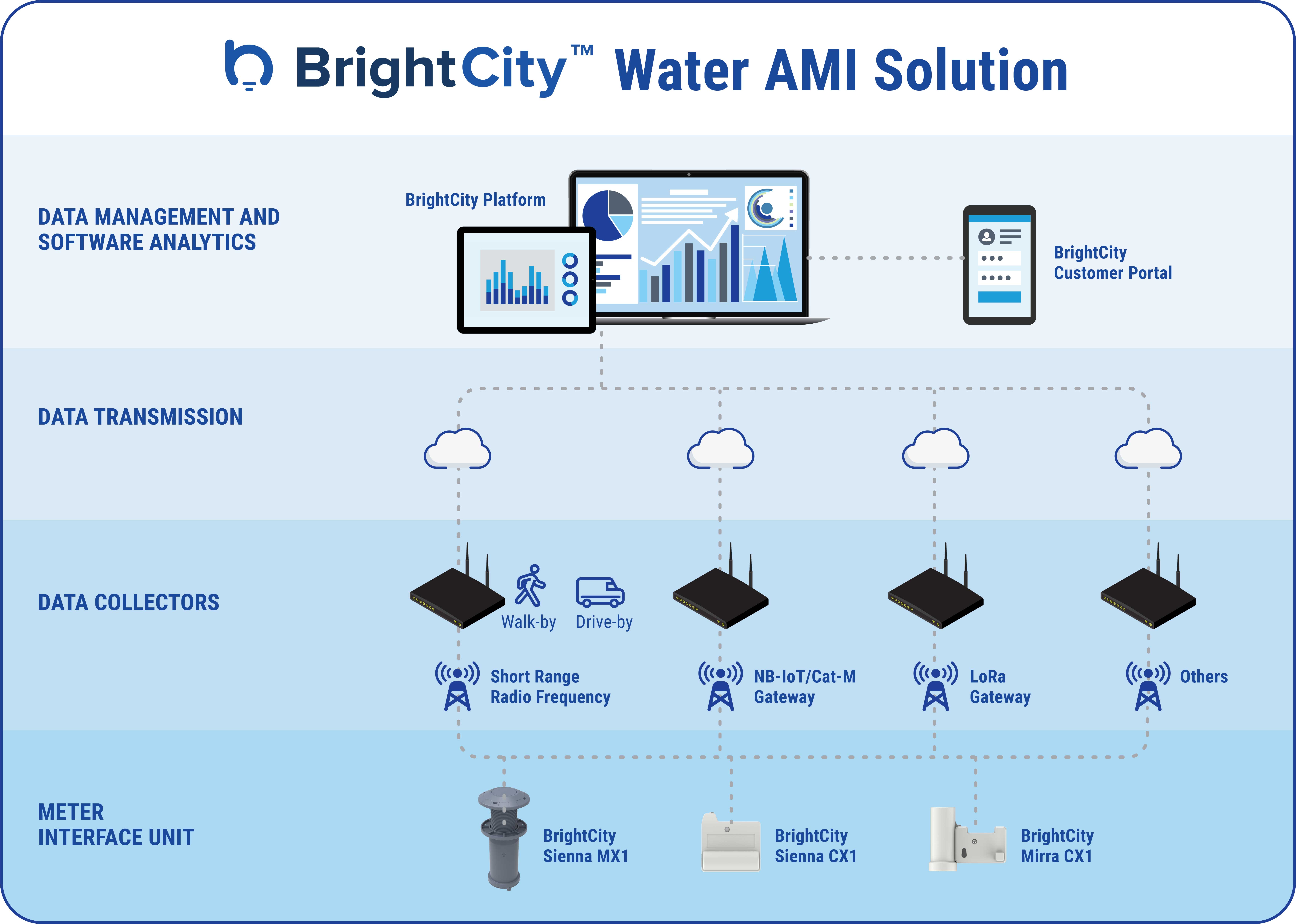
As cities grow and climate risks intensify, growing stress on water systems demands a shift in global water management. Each year, billions of cubic meters of treated water are lost before reaching a single tap – eroding utility revenues and disrupting everyday life. In the journey toward smarter, sustainable and resilient cities, reimagining water infrastructure is key to ensuring long-term water security.
Globally, utilities lose an estimated 126 billion cubic meters [1] of treated water every year – known as non-revenue water (NRW) – due to leaks, theft and metering inaccuracies that under report consumption. At average U.S. municipal rates, this translates into nearly US$190 billion in lost revenue annually.[2]
But the issue isn’t just financial. It’s also a matter of sustainability and resilience of our water supply in the long term. With urban populations set to double to 8.8 billion people by 2050 [3] and global water demand projected to rise by 20% to 30%, utilities today face mounting pressure to make every drop and every dollar count.[4]
The challenge varies across different environments. In new developments, city planners and utilities aim to build connected, intelligent infrastructure from the outset, to enable real-time data, predictive maintenance and long-term savings. In established cities, the focus is on modernising legacy systems while maintaining uninterrupted service.
In both cases, the goal remains the same: extend asset life, reduce outages, and deliver clean water to homes and businesses sustainably.

The shift from traditional mechanical meters to intelligent, connected devices has unlocked a new era for utilities. Advanced Metering Infrastructure (AMI) is now a cornerstone of modern water operations. More than just accurate billing, it supports a proactive, data-driven approach to more efficient water management.
With AMI, utilities can monitor water pressure, flow and usage patterns in real time. Leaks can now be detected early, reducing water loss and costs. Unusual usage patterns – due to theft or infrastructure issues – can be flagged and addressed quickly.
AMI along with distributed wireless sensors represent a shift from reactive repairs to strategic resource management, laying the groundwork for smarter, more resilient water systems.
Its potential extends further. In an era of climate volatility, smart metering data helps utility companies detect water stress early, track supply disruptions during droughts and floods, and contribute to broader city-level resilience planning. AMI thus becomes a key tool for adapting water networks to changing environmental conditions – turning data into valuable insights.
In new districts and smart city zones (both residential areas and industrial parks), utilities and planners can embed intelligence into water systems from the onset. Instead of retrofitting outdated infrastructure, utilities can treat AMI, sensors and analytics tools as foundations – not afterthoughts. Pipe layouts can be optimised for efficiency, wireless signal coverage planned upfront, and edge computing deployed to support localised decision-making.
The result is a smart water network that delivers foresight, not just oversight.
But technology alone isn’t enough. Cross-disciplinary collaboration is just as important. IT teams, civil engineers, utility operators, and urban planners must align early on data and communications standards, interoperability and scalability.
The payoff is significant: a fully digitalised smart water system that evolves with the community, is easy to maintain and more cost-effective to upgrade.
In older towns and cities, utilities must work with the constraints of legacy infrastructure – decades-old pipes, outdated meters and fragmented systems.
Choosing the right technology and solution is crucial for ensuring compatibility, scalability and future expansion. With limited budgets, utilities often pilot AMI in specific zones, testing ROI and integration before scaling system wide. Some utilities adopt hybrid approaches, introducing AMI in critical areas while phasing out older systems over time; others select solutions that are compatible with multiple meter types or support cost-effective add-ons to existing meters to make them smarter.
To support utilities in this transition, ST Engineering’s Urban Solutions has developed BrightCity Water AMI, a modular and scalable solution to help shift from reactive repairs to data-informed operations across both new and established environments.

BrightCity Water AMI integrates:
Together, these empower utilities to detect leaks early, flag anomalies and respond quickly to service issues, minimising losses and improving reliability.
One of BrightCity's key advantages is that its MIUs can be retrofitted to existing meters, removing the need for costly replacements. This accelerates deployment and reduces upfront cost – making it ideal for utilities that are modernising legacy infrastructure.
BrightCity Water AMI also breaks down data silos, with its open-standard MDMS enabling remote monitoring and unified control of diverse meter types via a central platform. The technology also supports real-time fault detection, pressure and leakage sensor integration, and even future-ready features like AI-powered diagnostics and autonomous inspections.
The success of water AMI implementations hinges not only on technology, but also on aligning strategic priorities, processes and people. Here are some best practices gleaned from our experience working alongside utilities around the world:
As climate pressures continue to intensify on the back of growing water demand, resilient, smart water infrastructure is essential.
Built on ST Engineering Urban Solutions’ proven expertise in secure, scalable smart city infrastructure, BrightCity empowers utilities to act faster, plan smarter, and build lasting impact.
BrightCity is already proving its value with more than 17 million wireless nodes deployed globally – helping utilities reduce water loss, save energy, improve efficiency, track assets and provide better service to their communities. Because when engineering meets technology for humanity, every drop is a building block for a more resilient and sustainable future.
[1] [2] Global Ratings. (2021). The widening chasm in global water infrastructure. View article
[3] World Bank. (n.d.). Urban development overview. View article
[4]World Bank, & Global Water Security & Sanitation Partnership (GWSP). (n.d.). Water in circular economy and resilience (WICER) (p. 10). World Bank. View article
Copyright © 2025 ST Engineering
By subscribing to the mailing list, you confirm that you have read and agree with the Terms of Use and Personal Data Policy.